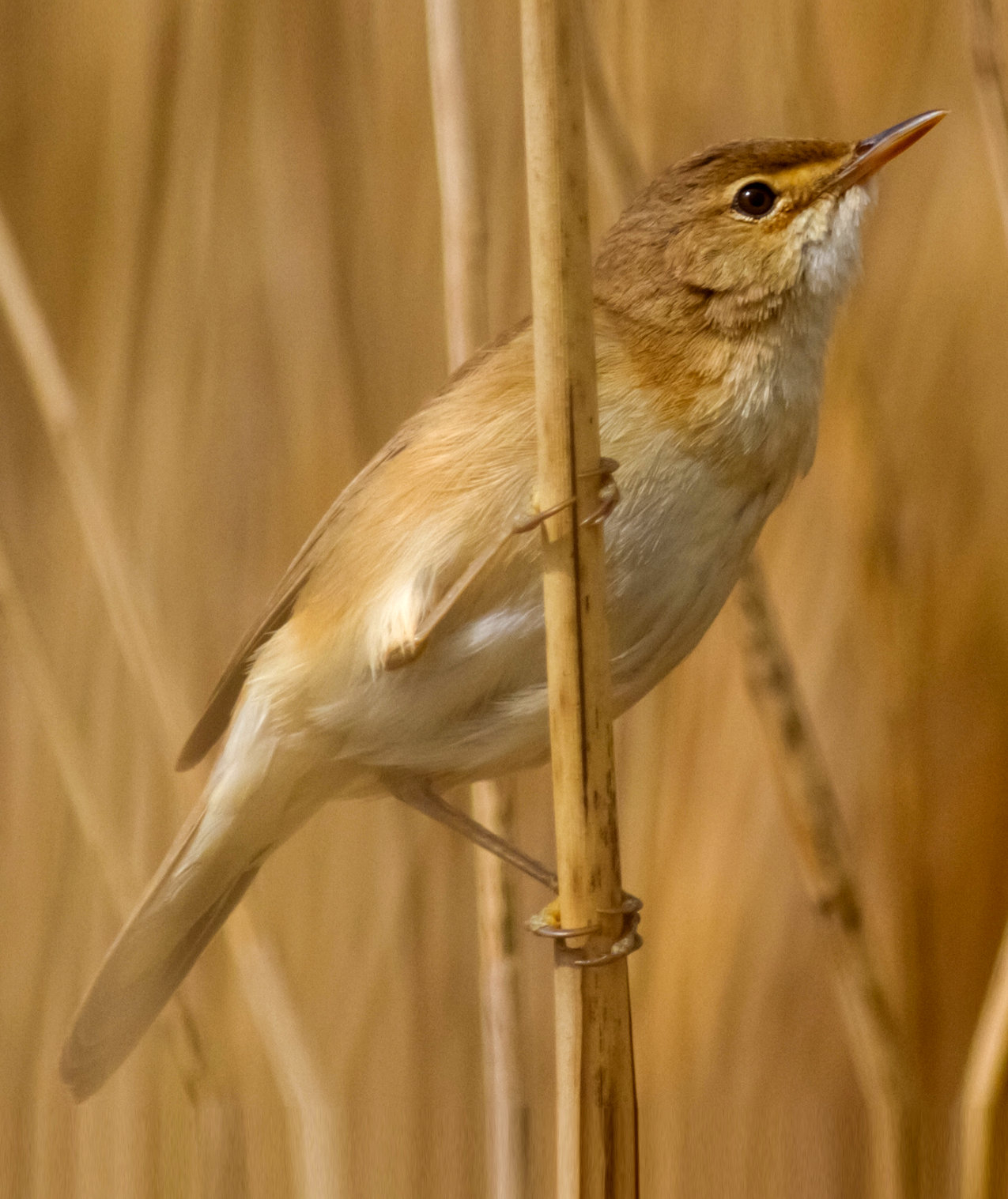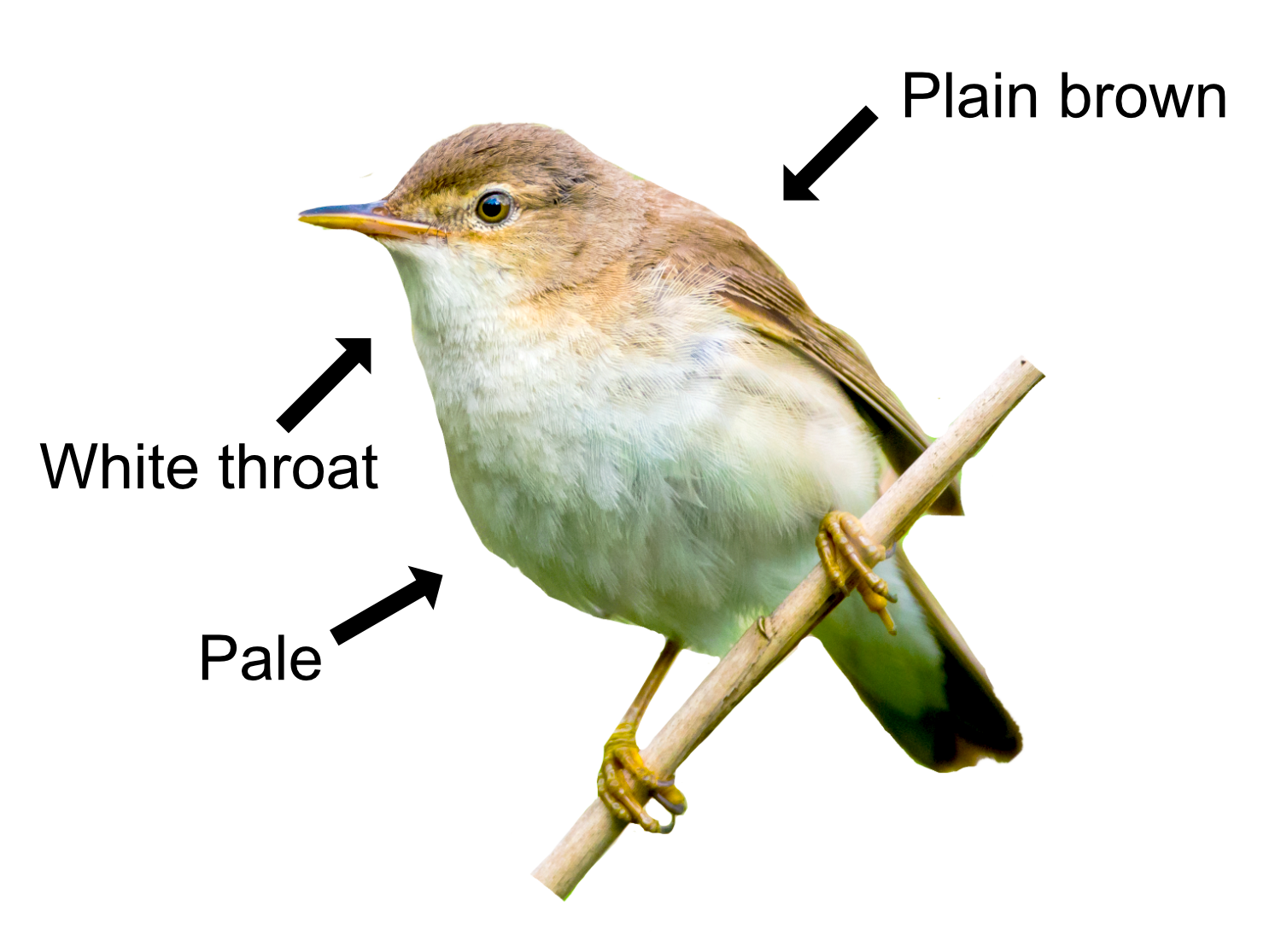
The Reed Warbler is a shy 'steady Eddie' of the reedbeds who remains hidden. He sings at a constant beat, repeating one phrase several times before smoothly spinning into the next. You could dance away to it. Like the Sedge Warbler, the Reed Warbler is a summer visitor from central Africa, arriving in April and leaving in September. Unlike the Sedge Warbler it, more sensibly, makes the journey in short stages.
The Reed Warbler is smaller than a Great Tit. It has plain unstreaked brown upperparts, a white throat, paler underparts and a rich brown rump. The bill is dark and looks long for its size. It has a very faint eye stripe unlike the bold one of a Sedge Warbler. It is a bit of a brown job. Like most warblers, mum and dad are identical and the kids are a richer buff colour. They sing from within the reeds and are rarely seen on a perch.
Reed Warblers eat insects, spiders and small snails which they find amongst the dense, waterside vegetation.

Normally a bit of a loner, the Reed Warbler breeds in reedbed colonies as this gives them better protection from ground predators. The males return two or three weeks before the females and, once hooked up, are usually monogamous. The nest is built entirely by mum. It takes her four days to build the initial cup of grass, reed stems and leaves, and another three days to finish lining it with finer materials to her satisfaction. In May, she lays 3-5 pale green speckled eggs at daily intervals. Both mum and dad incubate the eggs and have to keep a careful watch as they are favourite victims of the dastardly Cuckoo which will lay its own eggs in their nest. The eggs hatch at different times after 9-12 days. Only the eldest chick survives in wet summers with few insects. The chicks are fed by their parents and can fly after 10 days, but stay with mum and dad for 2 weeks. There are often two broods. Like the Sedge Warbler, mum and dad do a partial moult after breeding before finishing it off once back in Africa.
The largest concentration of Reed Warblers is found in East Anglia and along the south coast. Very few breed in Scotland and Ireland. About 130,000 pairs come to Britain in the summer. The biggest threat to them is the loss of breeding sites because of drainage. The longest-living Reed Warbler was 12.
Their Latin name is 'acrocephalus scripaceus' where 'acrocephalus' is from the Ancient Greek 'akros' for 'highest' and 'kephale' for 'head' like the Sedge Warbler. The 'scirpaceus' is from the Latin for 'reed'. Another English name is the 'reed wren'. It would be much better if scientists listened to the locals as this is a perfect name. There are ten subspecies of Reed Warbler and our Common Reed Warbler looks very similar to the Great Reed Warbler, except it is, of course, bigger and has a stronger eye stripe.